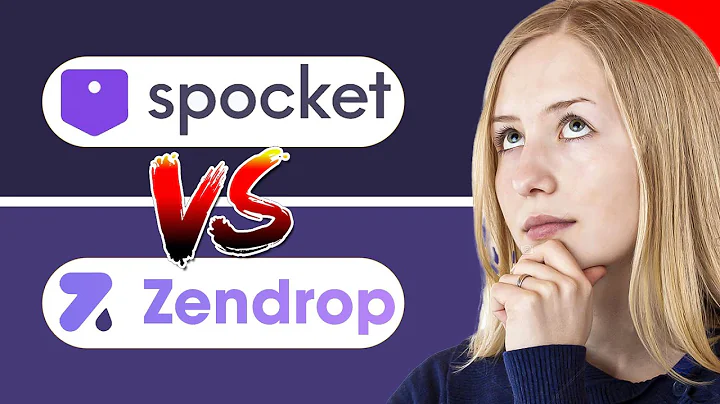Why I Left Etsy: Pros and Cons of Etsy vs Shopify
Table of Contents
- Introduction
- Why Choose Etsy as a Selling Platform?
- The Benefits of Etsy for Beginners
- Shifting to Shopify: Exploring Alternatives
- The Importance of Building an Email List
- Cost Comparison: Etsy vs. Shopify
- The Limitations of Etsy
- Retaining Customers and Branding
- The Controversy Surrounding Etsy's Expansion
- Conclusion
Introduction
Welcome back to my channel! In today's video, I want to discuss the reasons why I made the decision to leave Etsy, a popular online marketplace for handmade crafts and small businesses. Over the course of this video, I will share my personal experiences with Etsy as a selling platform and delve into the pros and cons that led me to explore other options, such as Shopify. Additionally, I will touch upon important considerations for building and retaining a customer base, as well as the evolving landscape of Etsy's marketplace. So, let's jump right into it!
Why Choose Etsy as a Selling Platform?
When I first started my candle company five years ago, Etsy was the obvious choice for selling my handmade crafts. In 2017, Etsy was booming and considered the number one platform for makers and small businesses. It provided a ready-made audience of customers who were actively searching for unique and handmade items. The major advantage of Etsy is its own marketing and advertising efforts, which eliminate the need for sellers to invest heavily in advertising to drive traffic to their shop. By simply listing your products on Etsy, you gain access to an influx of potential customers who are already browsing the site for handmade goods.
The Benefits of Etsy for Beginners
For new makers and small businesses, Etsy offers a fantastic platform to introduce and establish their brand. It allows beginners to tap into an existing audience and gain exposure through the platform's marketing efforts. Etsy's search functionality, combined with effective SEO (Search Engine Optimization) strategies, can help sellers reach a wider audience and increase their chances of making sales. Additionally, Etsy handles the transaction process, including payment processing, which simplifies the selling process for beginners who may not have the resources or infrastructure to manage these aspects on their own.
Shifting to Shopify: Exploring Alternatives
While Etsy provides an excellent starting point for new sellers, there comes a time when expanding beyond the platform becomes necessary. One of the key reasons I chose to leave Etsy was the lack of control over my customer data. Etsy did not allow sellers to capture and retain customer email addresses, which meant that if the platform were to disappear, sellers would lose access to their customer base. To address this concern, I decided to open a Shopify store, which would allow me to collect and build my own email list. This way, I could maintain direct communication with my customers and inform them about promotions, new products, and other updates.
The Importance of Building an Email List
Having an email list is a crucial aspect of any successful online business. It provides a direct channel for communication with customers and enables targeted marketing efforts. By capturing email addresses, sellers can expand their reach beyond the confines of a specific platform and cultivate a loyal customer base that can be carried over even if changes occur in the online marketplace. Platforms like Shopify offer built-in email marketing features that make it easier for sellers to manage their email campaigns and reach out to customers more effectively.
Cost Comparison: Etsy vs. Shopify
Another factor that influenced my decision to switch from Etsy to Shopify was the difference in costs. While Etsy charges various fees for listing, selling, and restocking products, Shopify operates on a subscription-based model. While you do have to pay for your domain name and other associated costs, you have more control over pricing and can factor in these expenses accordingly. This allows for greater flexibility in pricing products competitively while still covering expenses.
The Limitations of Etsy
Despite its many benefits, Etsy does have its limitations. One of the major drawbacks is the difficulty in retaining brand recognition. Since customers primarily associate their purchases with Etsy, it becomes challenging for them to remember specific shop names or brands unless there is a strong personal connection or loyalty to the seller. This can hinder long-term brand building and customer retention efforts. Additionally, Etsy's marketplace has become more saturated, making it harder for sellers to stand out among the competition.
Retaining Customers and Branding
A crucial aspect of transitioning from Etsy to another platform is retaining existing customers and building a brand identity that extends beyond the marketplace. By promoting your own website or Shopify store, you can redirect traffic from Etsy to your new platform. This allows you to maintain customer loyalty and effectively communicate any changes or updates to your brand. Creating a strong and distinctive brand is essential in establishing customer recognition and sustaining long-term success.
The Controversy Surrounding Etsy's Expansion
Etsy's expansion beyond its original focus on handmade crafts has sparked controversy within the seller community. Some sellers argue that Etsy's inclusion of mass-produced items or items that appear to be manufactured goes against the platform's initial purpose. This debate raises important questions about the values and direction of the marketplace and how it impacts small businesses and independent makers. It is crucial for sellers to carefully evaluate these changes and determine whether Etsy aligns with their brand values and goals.
Conclusion
In conclusion, while Etsy remains a great platform for beginners and those seeking an established marketplace and customer base, it may not be the ideal long-term solution for every seller. As businesses grow and evolve, exploring alternative platforms like Shopify can offer more control, scalability, and opportunities for brand development. By building an email list, retaining customers, and carefully weighing the pros and cons of different platforms, sellers can make informed decisions that align with their unique business goals. Remember, choosing the right platform is a personal decision that should be based on your specific needs, resources, and long-term aspirations.






















